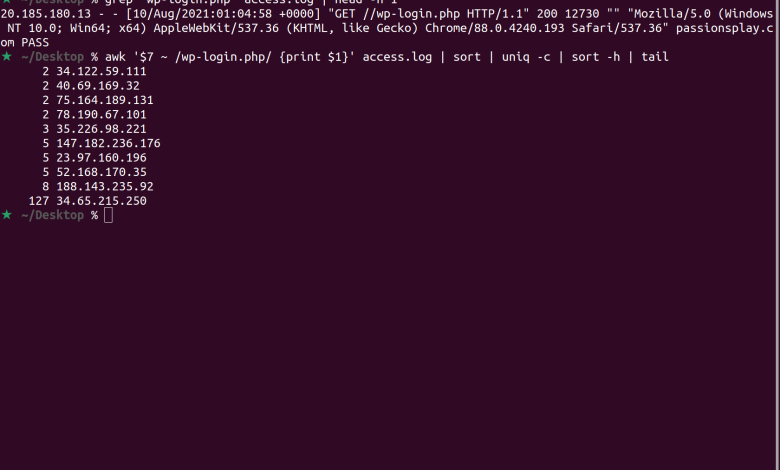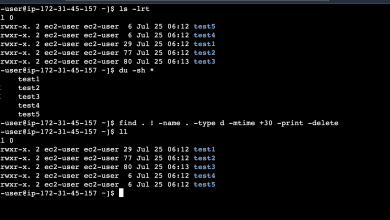How to Use the awk ‘{print $1}’ Command for Text Manipulation

The awk command is a powerful text-processing tool available in Unix-like operating systems. It is particularly useful for extracting and manipulating data from structured text files, such as log files, CSV files, or any text that is organized in columns or fields. One of the most common uses of awk is to extract specific columns from a file or output. The command awk '{print $1}' is a simple yet powerful example of this capability.
In this guide, we will explore how to use the awk '{print $1}' command for text manipulation, covering its syntax, use cases, and advanced techniques.
Table of Contents
- Introduction to
awk - Basic Syntax of
awk - Understanding
awk '{print $1}' - Use Cases for
awk '{print $1}'- Extracting the First Column from a File
- Processing Command Output
- Working with Delimiters
- Advanced Techniques
- Combining
awkwith Other Commands - Using
awkwith Regular Expressions - Conditional Printing
- Combining
- Best Practices for Using
awk - Conclusion
1. Introduction to awk
awk is a domain-specific language designed for text processing and data extraction. It is named after its creators: Alfred Aho, Peter Weinberger, and Brian Kernighan. awk processes text line by line, splitting each line into fields (columns) based on a specified delimiter (default is whitespace). It then allows you to perform actions on these fields, such as printing, filtering, or transforming them.
2. Basic Syntax of awk
The basic syntax of awk is as follows:
awk 'pattern { action }' input_file
pattern: A condition that determines which lines to process. If omitted, the action is applied to all lines.action: The operation to perform on the matching lines. Common actions include printing fields or performing calculations.input_file: The file to process. If omitted,awkreads from standard input.
3. Understanding awk '{print $1}'
The command awk '{print $1}' is a simple awk script that prints the first field of each line in the input. Here’s a breakdown of its components:
{print $1}: This is the action block. Theprintcommand outputs the specified field(s).$1refers to the first field in the current line.- Default Behavior: By default,
awksplits each line into fields based on whitespace (spaces or tabs). The first field is$1, the second is$2, and so on. The entire line is represented by$0.
For example, given the following input:
John Doe 30 Jane Smith 25
The command awk '{print $1}' would output:
John Jane
4. Use Cases for awk '{print $1}'
Extracting the First Column from a File
Suppose you have a file data.txt with the following content:
Alice 25 Engineer Bob 30 Designer Charlie 35 Manager
To extract the first column (names), use:
awk '{print $1}' data.txt
Output:
Alice Bob Charlie
Processing Command Output
You can use awk to process the output of other commands. For example, to list the usernames of logged-in users from the who command:
who | awk '{print $1}'
Output:
user1 user2 user3
Working with Delimiters
By default, awk uses whitespace as the field delimiter. However, you can specify a different delimiter using the -F option. For example, to extract the first field from a CSV file:
awk -F, '{print $1}' data.csv
Given the following data.csv:
Alice,25,Engineer Bob,30,Designer Charlie,35,Manager
Output:
Alice Bob Charlie
5. Advanced Techniques
Combining awk with Other Commands
awk can be combined with other Unix commands using pipes (|). For example, to count the number of unique users logged in:
who | awk '{print $1}' | sort | uniq | wc -l
Explanation:
who: Lists logged-in users.awk '{print $1}': Extracts the usernames.sort: Sorts the usernames.uniq: Removes duplicates.wc -l: Counts the number of lines.
Using awk with Regular Expressions
You can use regular expressions to filter lines before processing them. For example, to print the first field of lines containing the word “Engineer”:
awk '/Engineer/ {print $1}' data.txt
Output:
Alice
Conditional Printing
You can add conditions to control which lines are processed. For example, to print the first field only if the second field is greater than 30:
awk '$2 > 30 {print $1}' data.txt
Output:
Charlie
6. Best Practices for Using awk
- Use Descriptive Variable Names: When writing complex
awkscripts, use meaningful variable names to improve readability. - Test with Small Data: Test your
awkcommands on small datasets before applying them to large files. - Combine with Other Tools: Use
awkin combination with other Unix commands (e.g.,grep,sort,uniq) for more powerful text processing. - Specify Delimiters Explicitly: Use the
-Foption to specify delimiters, especially when working with non-whitespace delimiters like commas or colons.
7. Conclusion
The awk '{print $1}' command is a simple yet powerful tool for extracting the first column from structured text data. By mastering this command and its advanced techniques, you can efficiently manipulate and analyze text files, command output, and more. Whether you’re working with log files, CSV data, or system commands, awk is an indispensable tool in your Unix toolkit.
Happy text processing!





